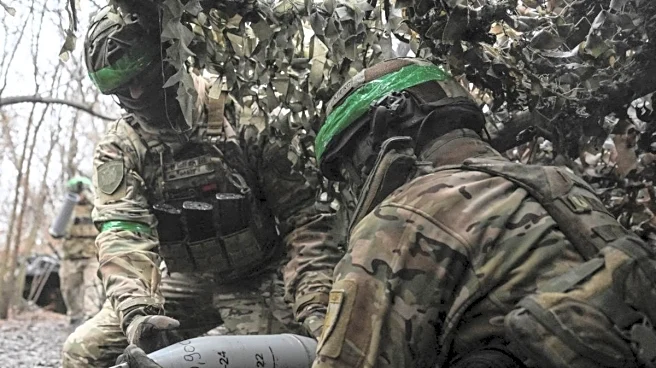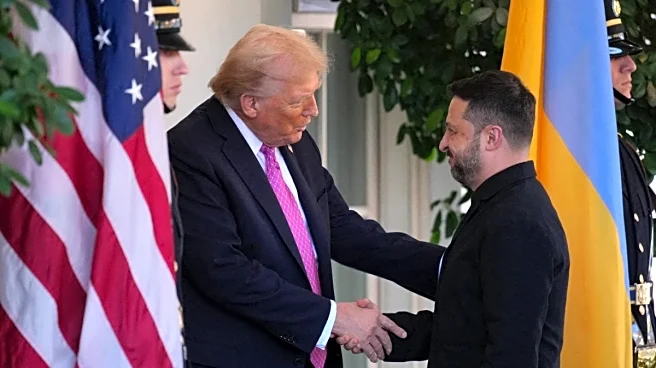Russia’s offensive inside Pokrovsk has accelerated through November, with its forces now claiming control over more than 75 per cent of the city, according to Russian General Valery Gerasimov’s briefing to President Vladimir Putin. Ukrainian defenders maintain that they are still preventing Russian troops from capturing additional ground in the city’s northern areas, stressing that their units are holding the defensive line and stopping further advances.
The battle for Pokrovsk has been unfolding for well over a year. What began as a slow pressure campaign has now turned into one of the most significant confrontations of the entire conflict, with both sides regarding the city as strategically and politically crucial.
Where Is Pokrovsk, And What
Makes It Important?
Pokrovsk is located in Ukraine’s eastern Donetsk region, around 60 kilometres northwest of the Russian-held city of Donetsk. Before the war, it had a population of roughly 60,000, functioning as an important road and rail junction that allowed Ukrainian forces to move supplies to other frontline outposts. Pokrovsk previously served as a key route through which troops supplied embattled positions along the frontline.
Over the course of the conflict, almost all civilians have left Pokrovsk. All children have been evacuated, with only a small number of residents remaining among heavily damaged apartment complexes and cratered roads. The region’s only coking-coal mine, located about 10 km west of the city, has suspended operations. Pokrovsk also once hosted the largest technical university in the region, which now stands abandoned after repeated shelling.
Pokrovsk is the last major Ukrainian-controlled city in western Donetsk, marking it as the gateway from Russian-held territory into more central parts of Ukraine. This geographical position is a key reason the city has become the focal point of Russia’s campaign.
Why Does Russia Want Pokrovsk?
Russia’s stated objective is to take full control of the Donbas, which includes the Donetsk and Luhansk provinces. Ukraine retains about 10 per cent of this region, around 5,000 square kilometres, mainly in northern Donetsk.
Pokrovsk’s capture would provide Moscow with a viable route toward Kramatorsk and Sloviansk, the two largest Ukrainian-held cities left in Donetsk. Securing Pokrovsk, along with nearby Kostiantynivka, would give Russia a platform from which to push northwards towards these urban centres and strengthen its wider campaign in Donbas.
Pokrovsk has also become a political objective for Moscow. Russia has invested significant manpower, estimated at nearly 150,000 troops, into surrounding and capturing the city. The aim is to demonstrate to domestic audiences, Kyiv, and Washington that the war is turning in Russia’s favour and that Moscow is prepared to sustain long campaigns. Russia sees momentum in Pokrovsk as a way to signal strength before winter and shape the perceptions of international actors, including US President Donald Trump, whose future support for Kyiv may depend on which side appears to be advancing.
For the Kremlin, Pokrovsk also provides a potential symbolic victory at a time when the Russian economy faces slower growth, rising prices, and the effects of sanctions and foreign business withdrawals. Demonstrating progress on the battlefield could help the government reinforce the narrative that the war is moving on Russia’s terms despite domestic strain.
How Has Russia Fought This Battle?
Unlike earlier operations such as Bakhmut, where Russian forces relied on intense frontal attacks, the offensive on Pokrovsk has been different.
A pincer strategy was used by Russia for more than a year. Instead of launching direct assaults, Russian units have steadily attempted to encircle the city by targeting supply lines and pressuring Ukrainian defences from multiple flanks. The objective has been to gradually restrict Ukrainian logistics by threatening the roads and routes that Kyiv relies on to sustain forces inside the city.
The campaign has relied on:
- Infiltration tactics, with small teams of two or three soldiers moving along fog-covered routes
- Continuous pressure on supply lines, using artillery, glide bombs, and FPV drones
- Use of civilian vehicles and motorbikes to approach Ukrainian positions
- Exploitation of seasonal fog, which has limited Ukraine’s drone reconnaissance and reduced early-warning capacity
What Is The Situation Inside Pokrovsk Now?
The frontline in Pokrovsk remains highly contested.
The 7th Rapid Response Corps in Kyiv stated that Ukrainian forces are inflicting “heavy losses” on Russian troops and reinforcing their positions using drone units. “The enemy is trying to cross the railway to increase the area of occupation of the city, but our troops are blocking these attempts.” It added that “the enemy’s troops in Pokrovsk are being ground down… and [Russia] is having to replenish its losses among personnel.”
Russian troops have already crossed the railway line in two parts of the city, first on 14 November and then on 20, according to open-source mapping from Ukraine’s Deep State project.
General Valery Gerasimov told President Vladimir Putin that Russian forces had captured several settlements around Pokrovsk and were destroying Ukrainian troops resisting in the area.
Russia’s defence ministry also released footage showing its soldiers moving through southern Pokrovsk along damaged, deserted streets. However, the footage could not be independently verified.
What Happens If Pokrovsk Falls?
The fall of Pokrovsk would reshape the military and political landscape of the war. It would open the way for Russian forces to move toward Kramatorsk and Sloviansk, the two largest cities Ukraine still controls in Donetsk. It would also leave the Dnipropetrovsk region to the west more exposed, especially as Russian units claim to have established a foothold on that side.
After the loss of Avdiivka earlier in 2024, Russian troops advanced with little resistance toward Pokrovsk and Ocheretyne. Ukrainian authorities have since reinforced positions behind Pokrovsk to manage a possible withdrawal and restrict Russia’s ability to exploit a breakthrough.
The capture of the city would offer Moscow a significant political and symbolic gain. Russia’s economy, though heavily supported by wartime spending, is showing signs of strain. Growth for 2025 is projected at about one per cent after more than four per cent the previous year. Inflation has reduced incomes, daily goods have become more expensive, and sanctions have forced many foreign companies to shut down or leave. A victory in Pokrovsk could therefore be used to reinforce the narrative that the campaign is progressing.
The situation is unfolding at a moment of internal complication for Kyiv. A corruption scandal of around USD 100 million in the state-owned energy sector has led to the suspension of senior officials and drawn anger at home. It has also raised concerns among Western supporters. If Pokrovsk falls, questions about Ukraine’s ability to hold territory are likely to intensify, potentially strengthening calls in Washington for mediation rather than sustained military aid.
Conclusion
Pokrovsk has become the central battleground of the war because it represents far more than the territory it occupies on the map. Its role as a former logistics hub, its position as the last major Ukrainian-held city in western Donetsk, and its proximity to Kramatorsk and Sloviansk have placed it at the core of both countries’ strategic calculations. The Russian campaign has nearly encircled the city, while Ukrainian forces continue to resist in the remaining sections under their control.


/images/ppid_59c68470-image-176361512241675793.webp)
/images/ppid_a911dc6a-image-176355928708444788.webp)
/images/ppid_a911dc6a-image-176355664141333637.webp)
/images/ppid_59c68470-image-17637025280583501.webp)

/images/ppid_59c68470-image-176366503544289917.webp)

/images/ppid_59c68470-image-176366004911840295.webp)
/images/ppid_59c68470-image-176374752960649880.webp)
/images/ppid_59c68470-image-176374507878393413.webp)
/images/ppid_59c68470-image-176361507828320725.webp)
/images/ppid_a911dc6a-image-1763603480618556.webp)

